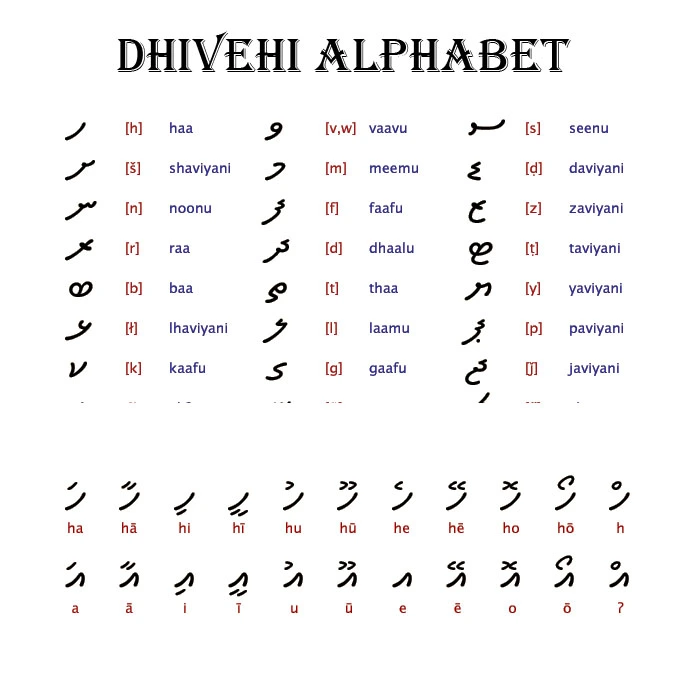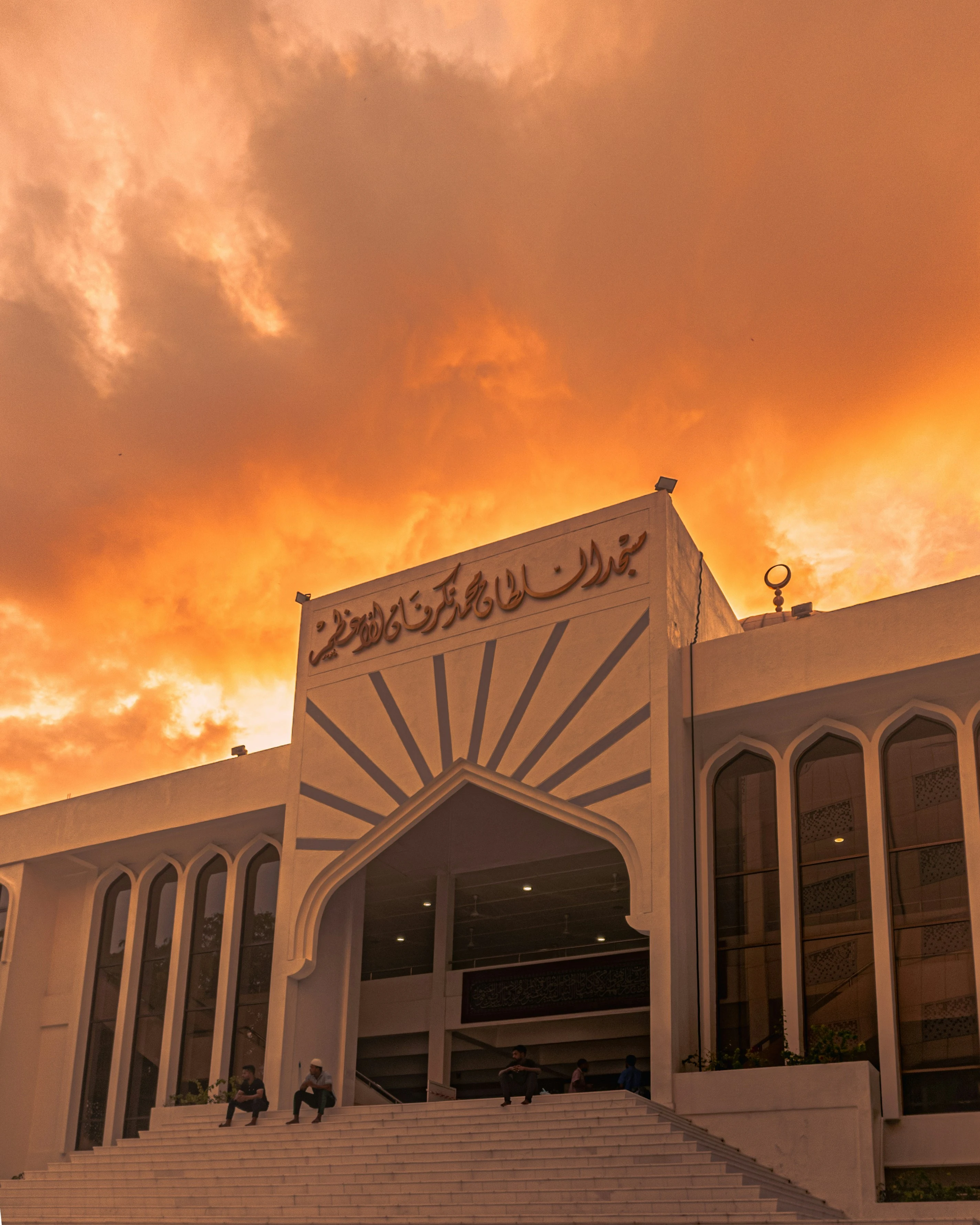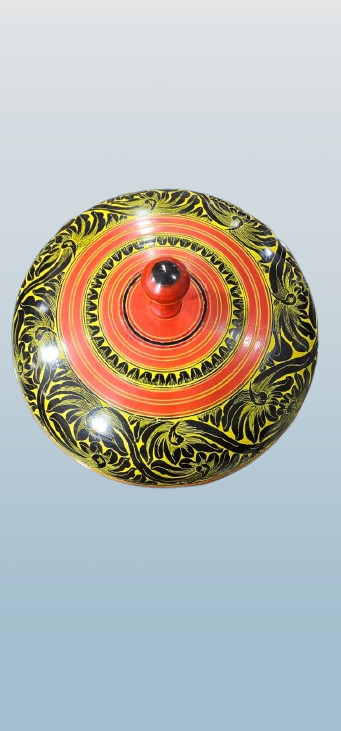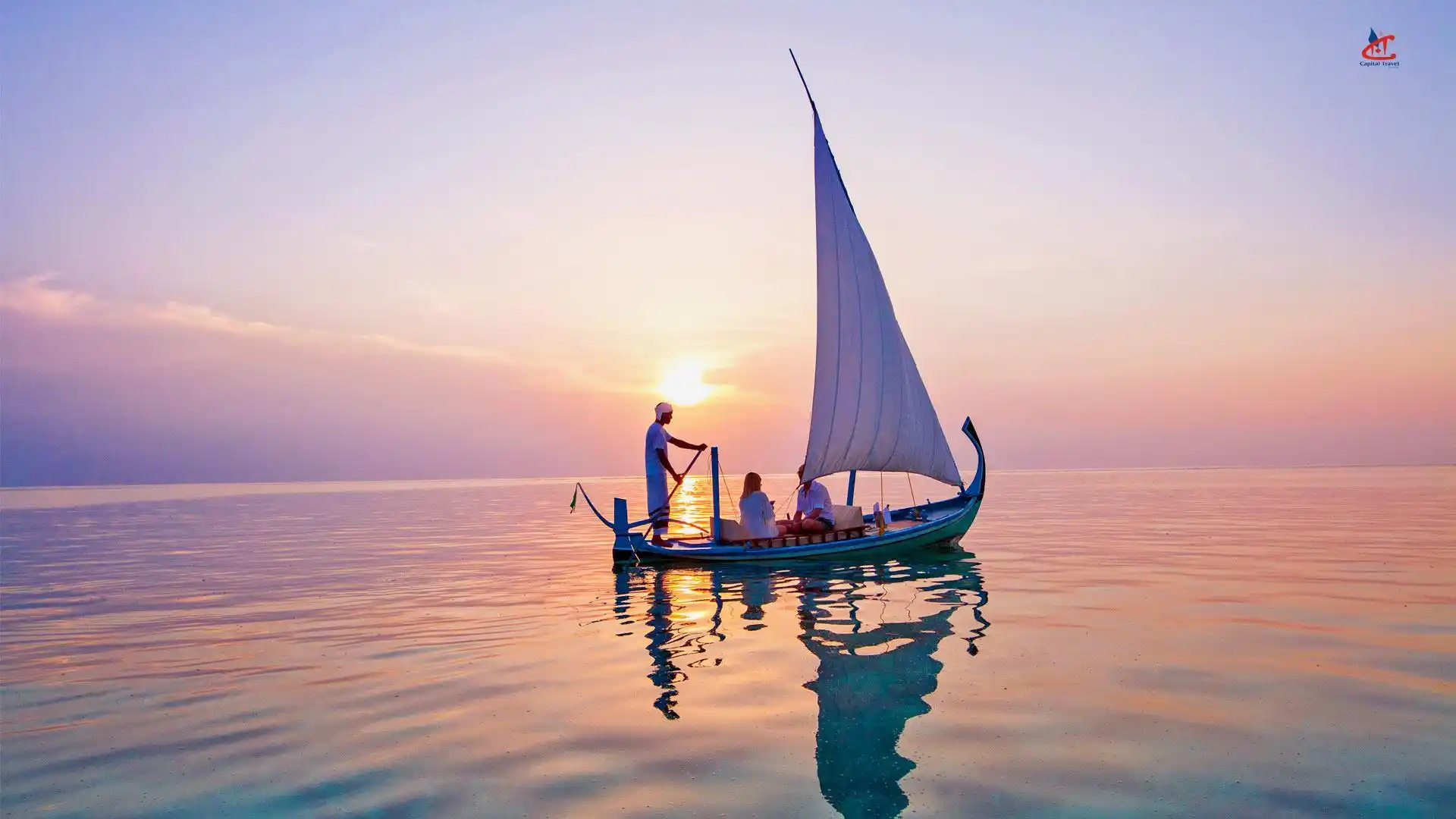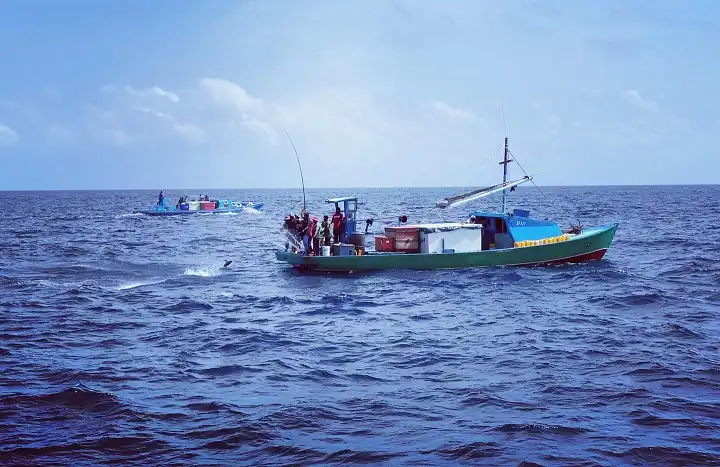Experience the rich cultural heritage of the Maldives through traditional performances and customs
Beyond the pristine beaches and luxury resorts, the Maldives offers a rich cultural tapestry shaped by centuries of influences from South Asia, Arabia, and Africa. This island nation's unique heritage is expressed through vibrant traditions, distinctive cuisine, intricate crafts, and a way of life deeply connected to the sea. While many visitors focus solely on the natural beauty of the Maldives, understanding and experiencing the local culture adds a profound dimension to any trip. This comprehensive guide explores Maldivian traditions, customs, arts, and cultural experiences that provide insight into the authentic soul of this island paradise.
Video: Experience the rich cultural heritage of the Maldives
Maldivian culture is a unique blend of influences shaped by the country's geographic isolation and historical trade connections:
The cultural identity of the Maldives has been shaped by:
Key Fact: The Maldives has maintained remarkable cultural continuity despite these diverse influences.
Today's Maldivian culture balances tradition and modernity:
Cultural Insight: The Maldives has one of the highest literacy rates in South Asia, reflecting the value placed on education.
Dhivehi is the national language of the Maldives and one of the most distinctive elements of Maldivian cultural identity. This unique language is spoken nowhere else in the world and has evolved in relative isolation over centuries. The language is written in Thaana script, which reads from right to left and was developed around the 16th century. Thaana incorporates elements of Arabic numerals and indigenous symbols, creating a writing system unique to the Maldives.
While Dhivehi has roots in Sanskrit and is related to Sinhala (spoken in Sri Lanka), it has incorporated vocabulary from Arabic, Hindi, French, Persian, Portuguese, and English throughout its history. The language features honorifics and formal speech patterns that reflect the traditional social structure of Maldivian society.
Islam is the state religion of the Maldives and has profoundly shaped Maldivian culture since its introduction in the 12th century. Prior to Islamic conversion, the islands practiced Buddhism and ancient beliefs, but today Islam is central to Maldivian identity and daily life. The constitution requires all citizens to be Muslim, and the practice of other religions by Maldivians is prohibited, though foreign visitors are free to practice their faiths privately.
Islamic principles influence many aspects of Maldivian culture, from the five daily prayer times observed throughout the islands to dietary practices, modest dress codes, and social customs. During the holy month of Ramadan, most Maldivians fast from dawn to dusk, and visitors to local islands should be respectful by not eating, drinking, or smoking in public during daylight hours.
Lacquer work (Liyelaa Jehun) is one of the most distinctive traditional crafts of the Maldives, particularly associated with the island of Thulhaadhoo in Baa Atoll. This intricate art form involves applying colored lacquer to wooden objects in elaborate patterns. Craftsmen create beautiful containers, vases, and decorative items by first carving the wood (typically from coconut palm or breadfruit trees), then applying layers of lacquer derived from tree resin mixed with natural pigments.
The process is labor-intensive and requires great skill. After shaping the wooden object on a lathe, artisans apply multiple layers of lacquer in different colors, then carefully etch designs through the layers to reveal the colors beneath. Traditional designs feature geometric patterns and stylized natural motifs that have been passed down through generations.
Mat weaving is a traditional craft practiced primarily by women in the Maldives, with the finest examples coming from Gaafu Dhaalu Atoll. The most prized mats, known as Thundu Kunaa, are woven from reeds that grow in marshy areas of the islands. These reeds are dried, split, and sometimes dyed using natural colorants before being meticulously woven into intricate patterns.
Traditional Maldivian mats feature geometric designs in black, brown, yellow, and red, often incorporating symbolic patterns that tell stories or represent aspects of island life. The weaving process is extremely time-consuming—a single fine mat can take months to complete. Historically, these mats were so valued that they were presented as gifts to royalty and used as a form of currency for trade.
The dhoni, a traditional Maldivian sailing vessel, represents the pinnacle of the islands' maritime craftsmanship. These handcrafted wooden boats have been the backbone of Maldivian transportation, fishing, and trade for centuries. The art of dhoni construction has been passed down through generations, with master craftsmen using techniques that combine indigenous knowledge with influences from Arab and Indian shipbuilding traditions.
Traditionally built without written plans or measurements, dhonis are constructed using coconut wood and other local timber. The distinctive hull shape—with its raised bow and stern—is perfectly adapted to navigate both the open ocean and shallow lagoons of the Maldives. While modern dhonis now often incorporate engines and contemporary materials, the traditional construction methods are still practiced on some islands.
Boduberu (literally "big drum") is the most popular form of traditional music and dance in the Maldives. Believed to have African origins, this energetic performance features a group of 15-20 people, primarily men, who sing and dance to the rhythm of large drums made from coconut wood covered with goat hide.
A typical performance begins slowly with two or three drummers and a lead singer, gradually building in tempo and intensity as more drummers and dancers join in. As the rhythm accelerates, dancers enter a trance-like state, performing acrobatic movements that showcase both strength and agility.
The lyrics of boduberu songs often relate to heroic deeds, romance, or daily island life. This vibrant art form remains an integral part of celebrations and cultural events throughout the Maldives.
Where to Experience: Many resorts organize boduberu performances for guests, while more authentic versions can be witnessed during festivals on local islands or in cultural centers in Male.
Beyond boduberu, the Maldives has several other traditional performance arts that reflect its diverse cultural influences:
These traditional performances are increasingly being preserved through cultural initiatives and festivals that celebrate Maldivian heritage.
Maldivian cuisine reflects the nation's island geography and cultural influences, with seafood, coconut, and rice forming the foundation of most traditional dishes. The cuisine is characterized by its bold flavors, with coconut, chili, lime, and curry leaves featuring prominently in many recipes. While resort dining often focuses on international cuisine, experiencing authentic Maldivian food provides insight into local culture and daily life.
Snacks & Street Food: Hedhikaa refers to Maldivian short eats or snacks, including bajiya (pastries stuffed with fish, coconut, and onions), gulha (deep-fried fish balls), keemia (fish rolls), and masroshi (tuna-stuffed chapati).
One of the most authentic ways to experience Maldivian culture is to visit an inhabited local island. Unlike resort islands, local islands offer glimpses into everyday Maldivian life, from colorful houses and small mosques to fishing boats and community gathering places.
What to Experience:
Popular Local Islands: Maafushi, Thulusdhoo, Dhigurah, and Fulidhoo are well-equipped for tourists while maintaining their cultural authenticity.
Cultural Note: When visiting local islands, respect Islamic customs by dressing modestly (shoulders and knees covered) and observing local etiquette. Most inhabited islands have designated "bikini beaches" where Western swimwear is permitted.
The capital city of Male packs a wealth of cultural attractions into its 2.2 square kilometers, offering visitors insight into Maldivian history, religion, and contemporary life.
Key Cultural Sites:
Practical Tip: Male can be explored in a day trip from your resort or as an overnight stay before or after your main vacation. Many resorts offer guided excursions to the capital.
Fishing has been the lifeblood of Maldivian society for centuries, and participating in a traditional fishing excursion offers insight into this crucial aspect of local culture.
Cultural Experience:
Cultural Significance: Beyond being a tourist activity, fishing represents the Maldivian connection to the sea and sustainable living practices that have sustained island communities for generations.
For more details about traditional fishing experiences, visit our comprehensive Maldives fishing guide.
Participating in a traditional craft workshop allows visitors to learn about Maldivian artistic heritage through hands-on experience.
Workshop Options:
Where to Find Workshops: Many resorts offer cultural activities as part of their guest programs. Some local islands with developed tourism, such as Thulusdhoo and Dhigurah, also provide craft workshops for visitors.
Experiencing traditional Maldivian music and dance provides insight into the islands' cultural heritage and historical influences.
Performance Types:
Where to Experience: Many resorts host weekly cultural nights featuring traditional performances. The National Art Gallery and Maldivian Cultural Center in Male also showcase performances, particularly during festivals and special events.
The Maldives is a Muslim country with conservative dress standards on local islands. While resort islands operate under more relaxed rules for tourists, visits to inhabited islands require modest attire. Women should cover shoulders and knees (loose pants, skirts below the knee, and sleeved tops), while men should wear shirts and shorts or pants that cover the knees. Public displays of affection should be avoided, as they are considered inappropriate in Maldivian culture. When swimming on local islands, use designated "bikini beaches" where Western swimwear is permitted.
Islam is central to Maldivian life, and visitors should respect religious practices. During the holy month of Ramadan, eating, drinking, or smoking in public on local islands during daylight hours is prohibited (including for tourists). When visiting mosques, remove shoes before entering, and women should cover their hair with a scarf. Photography inside mosques may be restricted or require permission. Friday is the Muslim holy day, and many businesses on local islands close for prayers, particularly from 11:30 AM to 1:30 PM.
Maldivians are generally friendly and hospitable but may be reserved with strangers. When greeting locals, a simple handshake is appropriate, though some conservative individuals may avoid physical contact with the opposite sex. It's polite to accept offers of food or drink when visiting a Maldivian home. When dining, the right hand is used for eating and passing food. Alcohol is prohibited on local islands (though available at resorts), and bringing alcohol to inhabited islands is illegal. Photography of local people should be done with permission, especially for close-up portraits.
The Maldives' fragile environment is intrinsically linked to its cultural heritage. Respect coral reefs by not touching or standing on them during diving or snorkeling excursions. Avoid collecting shells, coral, or other marine items as souvenirs (their export is illegal). Support local artisans by purchasing authentic handicrafts rather than imported souvenirs. When visiting historical sites, follow guidelines for preservation. Many islands have designated areas for waste disposal—use these facilities and avoid littering, as waste management is a significant challenge for island communities.
While resorts operate somewhat separately from traditional Maldivian life, many offer cultural experiences that provide insight into local heritage. Look for resorts that organize weekly Maldivian cultural nights featuring boduberu performances, traditional dance, and local cuisine. Some luxury properties employ cultural ambassadors who lead activities like coconut husking demonstrations, palm leaf weaving workshops, or Dhivehi language lessons. Culinary experiences often include Maldivian cooking classes where you can learn to prepare dishes like mas huni or garudhiya. Many resorts also arrange excursions to nearby local islands or Male city for more immersive cultural experiences. Resort boutiques frequently stock authentic handicrafts like lacquerware, woven mats, and model dhonis, though it's worth asking about the provenance to ensure you're purchasing genuine Maldivian crafts. For a deeper cultural experience, consider choosing a resort that employs a significant percentage of Maldivian staff and incorporates cultural elements into its design and operations.
The Maldivian calendar features several significant celebrations that showcase the country's cultural heritage and religious traditions. The most important religious festivals are Eid al-Fitr (marking the end of Ramadan) and Eid al-Adha (the Feast of Sacrifice), which follow the Islamic lunar calendar and thus occur on different dates each year. These celebrations feature special prayers, family gatherings, feasting, and community events. Independence Day (July 26) commemorates the Maldives' independence from British protection in 1965 with parades, performances, and patriotic displays throughout the country, particularly in Male. Republic Day (November 11) marks the establishment of the republic in 1968 and is celebrated with official ceremonies and cultural events. The Prophet Muhammad's Birthday (Mawlid al-Nabi) is observed with religious gatherings and special prayers. National Day (first day of Rabee-ul-Awwal in the Islamic calendar) commemorates the victory of Muhammad Thakurufaanu over Portuguese colonizers in 1573. Fishermen's Day celebrates the importance of fishing to Maldivian culture and economy with competitions and demonstrations of traditional fishing techniques. Visitors interested in experiencing these celebrations should check the dates (particularly for Islamic holidays that follow the lunar calendar) and consider visiting local islands rather than resorts for more authentic cultural immersion.
Tourism has had a complex impact on Maldivian culture since the first resort opened in 1972. The industry has created economic opportunities, reducing dependence on fishing and introducing new career paths for Maldivians. This economic shift has raised living standards but also altered traditional lifestyles and community structures. The "one island, one resort" model initially created a separation between tourists and local culture, with resort islands operating under different rules than inhabited islands. This separation helped preserve traditional ways of life but limited cultural exchange. In recent years, the growth of guesthouse tourism on local islands has increased direct cultural interaction between visitors and Maldivians. This has both positive aspects (cultural appreciation, economic benefits to local communities) and challenges (pressure on conservative social norms, environmental impacts). Traditional crafts like lacquerware and mat weaving have found new markets through tourism, helping preserve these art forms while sometimes adapting designs to tourist preferences. The international exposure brought by tourism has influenced younger generations of Maldivians, who increasingly balance traditional values with global perspectives. Government initiatives now focus on sustainable tourism that preserves cultural heritage while allowing economic development. Overall, while tourism has inevitably changed aspects of Maldivian culture, it has also created opportunities for cultural preservation and revival through economic incentives and increased appreciation for traditional arts, crafts, and performances.
Traditional Maldivian family structure reflects both Islamic principles and the practical realities of island life. Extended family networks are important, with multiple generations often living together or in close proximity, particularly on smaller islands. The Maldives traditionally follows a matrilocal residence pattern, where married couples often live near or with the wife's family. This practice developed partly due to men's frequent absence for fishing expeditions. Maldivian women have historically enjoyed relatively high status compared to some other Islamic societies, with rights to property, education, and participation in family decision-making. Women typically manage household affairs and often engage in income-generating activities like handicrafts, while men traditionally focus on fishing and boat building. Children are highly valued in Maldivian society and are raised not only by parents but with significant involvement from grandparents, aunts, uncles, and the broader community. The concept of "island family" extends beyond blood relations, with close-knit communities where neighbors play important roles in child-rearing and support networks. Marriage remains an important institution, traditionally arranged with family involvement, though modern Maldivians increasingly choose their own partners. Divorce and remarriage have been relatively common historically, reflecting pragmatic approaches to family formation in island communities. In recent decades, urbanization (particularly in Male) and increased education and career opportunities have led to smaller nuclear family units and changing gender roles, though extended family ties remain important in Maldivian social structure.
The most culturally significant souvenirs from the Maldives are traditional handicrafts that showcase the islands' artistic heritage. Lacquerware (liyelaa jehun) items such as vases, boxes, and decorative containers represent one of the Maldives' most distinctive art forms, with their vibrant colors and intricate patterns. Each piece requires considerable skill and time to create, making them valuable cultural artifacts. Handwoven mats (thundu kunaa) from Gaafu Dhaalu Atoll feature geometric designs and natural dyes, representing months of meticulous work by skilled weavers. These mats were historically so valued they were presented as royal gifts. Miniature dhoni models offer a representation of the traditional Maldivian sailing vessel that has been central to island life for centuries. Look for handcrafted versions made using traditional boat-building techniques. Coconut wood products, including kitchen utensils, decorative items, and jewelry, showcase the Maldivians' resourceful use of this abundant natural material. Coir rope products (handmade from coconut husks) include bags, mats, and decorative items that reflect traditional island craftsmanship. For culinary souvenirs, consider Maldivian spice mixes, locally produced coconut oil, or vacuum-packed tuna products. When purchasing souvenirs, look for authenticity—items made in the Maldives rather than imported replicas. The best places to find genuine handicrafts include the Authentic Maldivian Crafts Cooperative (AMCC) in Male, island craft centers on Thulusdhoo and Thulhaadhoo, and markets on local islands. While resort boutiques offer convenience, their selections may include imported items alongside authentic crafts.
Beyond the picture-perfect beaches and luxury resorts that have made the Maldives famous, lies a rich cultural tapestry waiting to be discovered. Taking the time to engage with Maldivian traditions, arts, cuisine, and community life adds a profound dimension to your island experience, transforming a simple beach vacation into a meaningful cultural journey.
The Maldivian people have developed a unique way of life adapted to their island environment over thousands of years. Their resilience, creativity, and community spirit are reflected in everything from their boat-building techniques to their communal celebrations. By participating in cultural experiences, visitors gain appreciation for how the Maldivians have thrived in this remote archipelago and developed their distinctive identity.
While the "one island, one resort" tourism model has historically created separation between visitors and local culture, opportunities for cultural immersion are increasing. Whether through a day trip to a local island, a cooking class featuring traditional cuisine, or a conversation with Maldivian staff at your resort, these cultural connections often become the most memorable aspects of a Maldives vacation.
As the Maldives continues to develop its tourism industry, cultural preservation becomes increasingly important. By showing interest in authentic Maldivian experiences and supporting traditional artisans and practices, visitors play a role in ensuring these cultural treasures continue for future generations.
The true magic of the Maldives lies not just in its natural beauty but in the harmonious way its people have lived within this extraordinary environment. By embracing both the paradise beaches and the cultural heritage, visitors can experience the complete soul of this remarkable island nation.

